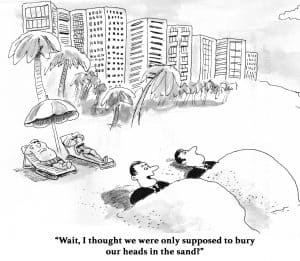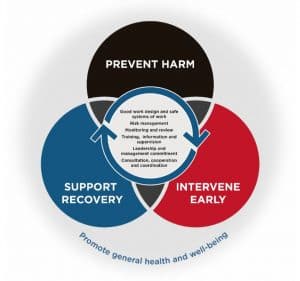 The 2018 Comcare conference currently happening in Melbourne Australia is a mixed bag, perhaps as conferences should be. There is a mix of useful information and perspectives but this has also led to mixed messages.
The 2018 Comcare conference currently happening in Melbourne Australia is a mixed bag, perhaps as conferences should be. There is a mix of useful information and perspectives but this has also led to mixed messages.
Category: ethics
Could your company manage an embarrassing workplace injury?
 Every man is aware of his penis and scrotum from a very early age. Male genitals do not feature often in discussions about occupational health and safety (OHS) but there was a workplace incident in the United States around 1970 that gained considerable attention but not really from the OHS perspective. I have always thought this incident would be a useful case study for discussing how this scenario would be managed today.
Every man is aware of his penis and scrotum from a very early age. Male genitals do not feature often in discussions about occupational health and safety (OHS) but there was a workplace incident in the United States around 1970 that gained considerable attention but not really from the OHS perspective. I have always thought this incident would be a useful case study for discussing how this scenario would be managed today.
In 1991 the journal “Medical Aspects of Human Sexuality” Dr William A Morton Jr. wrote of an unusual medical case. Basic a worker ripped open his scrotum while using a conveyor belt to masturbate. He was so embarrassed about the incident, he stapled his scrotum back together and told no one of the incident. I encourage readers to go to the full article at Snopes.com (some may find the details confronting), where Snopes verified the truth of the story, but the industrial crux of the incident is: Continue reading “Could your company manage an embarrassing workplace injury?”
Where is the Senate Inquiry into Industrial Deaths heading?
As readers would realise, the transcripts for the Australian Senate inquiry into industrial deaths are fascinating. It is worth looking at the other presentations and questions on the day when the Australian Chamber of Commerce and Industry received a grilling as this provides insight into how to present to a government inquiry addressing occupational health and safety.
The Senate Committee has probably heard more from relatives of deceased workers than has any other similar inquiry, perhaps even the Workplace Bullying inquiry in which this Committee’s member Deborah O’Neill participated. This is an indication of the shift in OHS over the last few years where the human impacts of workplace safety failures, what some describe as the “lived experience”, gain an influence that used to sit with professionals and acknowledged subject matter experts.

A possible licence to be safe
 The Victorian Parliament continues to consider the Building Amendment (Registration of Building Trades and Other Matters) Bill 2018. According to one interpretation in the unofficial Hansard:
The Victorian Parliament continues to consider the Building Amendment (Registration of Building Trades and Other Matters) Bill 2018. According to one interpretation in the unofficial Hansard:
“This bill’s objectives are to deliver better outcomes for domestic building consumers and building practitioners through further improvements to the practitioner registration and disciplinary system, improve compliance with swimming pool and spa barrier standards and implement some recommendations of the Victorian Cladding Taskforce and the Coroners Court.”
There are many aspects to this Bill, one of which is occupational health and safety (OHS).
Review of West Gate Bridge findings has important lessons for modern infrastructure projects
2020 will be the fiftieth anniversary of the collapse of the West Gate Bridge which resulted in, amongst others, the deaths of 35 workers, changed Victoria’s approach to occupational health and safety (OHS), instigated a Royal Commission into the disaster, strengthened trade union influence and established an industrial antagonism to the John Holland group of businesses that continues today.

Last week,
An iron fist in a velvet glove to HR over psych claims
 Dr Rebecca Michalak has just published an extraordinary article calling on the Human Resources profession and many others to take a good, hard look at how they treat workers who may have been subjected to psychological pressures at work.
Dr Rebecca Michalak has just published an extraordinary article calling on the Human Resources profession and many others to take a good, hard look at how they treat workers who may have been subjected to psychological pressures at work.
Human Resources personnel could feel particularly hard done by but Michalak stresses that there are many players in the process of creating and managing psychologically healthy workplace and of not adequately managing psychologically injured workers. She makes her proposition clear up front:
If you don’t prevent, you perpetuate

One of the most important occupational health and safety (OHS) guidances released the last couple of years is the Safe Work Australia (SWA) guide “Work-related psychological health and safety: A systematic approach to meeting your duties“, but its significance is not being universally embraced.
Recently Australian law firm, Minter Ellison, released an
